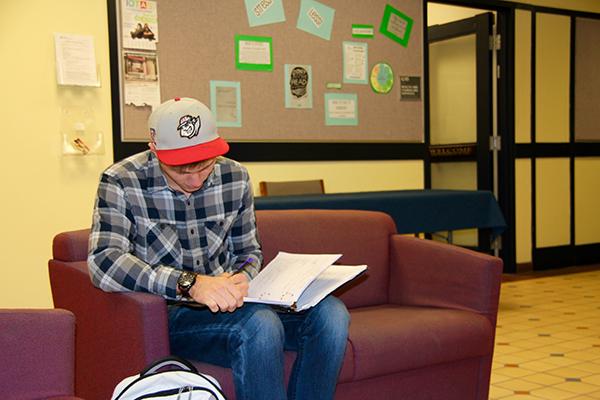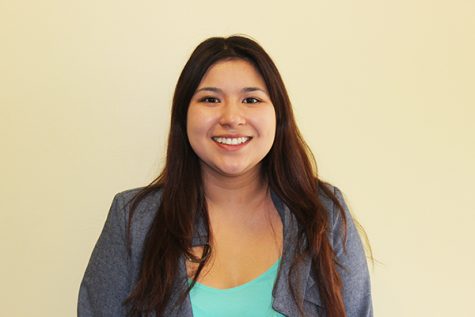Freshmen: 19.2 percent fall behind

Sophomore Michael Gross studies outside the Cambria Room in the Student Union.
November 9, 2016
At midterm this fall, 19.2 percent of freshmen had three or more unsatisfactory grades, up from 16.9 percent last fall.
Figures are from a report by Assistant Academic Affairs Vice President Paul Newman.
“All first-year students get an (honors, satisfactory or unsatisfactory) grade, so they take the normal grading scale and they break it up. The (satisfactory) versus the (unsatisfactory) is along the lines of a C and C-minus scale,” saidAcademic Success Center counselor BJ Sarneso.
All freshmen are able to see their midterm grades on their student center. The Academic Success Center contacts the students who have unsatisfactory midterm grades by sending an email.
Those groups are broken into how many unsatisfactory grades a student receives. A student with three unsatisfactory midterm grades may be pushed harder than a student with only one unsatisfactory midterm grade.
“The Academic Success Center encourages those students with unsatisfactory grades to come in, to meet with their adviser and to talk to their instructor. There is a whole series of steps that we push them to go through,” said Sarneso.
The point of midterm grades is to check on how students are doing at midterm, said Sarneso. He also said it is important that students with unsatisfactory midterm grades meet with their instructors to clarify where they stand in the class ahead of a withdrawal deadline in case a decision needs to be made.
“If a student has multiple (unsatisfactory) grades, then they are assigned to Newman, who takes the lead on that.
“Then the student will be called in to be individually assessed to see (what course of action) is appropriate,” said Sarneso.
“We don’t want to have a blanket response because a student could theoretically have four (unsatisfactory) grades and have four C- grades and end the term with a B average,” said Sarneso.
In the event of an unsatisfactory midterm grade, no matter what, Academic Success Center staff members want to take a look at that student and make sure they are on the right track to do as well in school as they can.
The center’s Great Outcomes in Academic Learning program is for first-year students in their second semester. It is for students who return in the spring with a grade-point average below a 2.0, and thus are on academic probation.
Sarneso said the outcomes program is an academic recovery program, so it is for students who did not do as well as they had hoped their first semester to trying to get back on track for their second semester.
“The success rate of the program is tied directly to the compliance of the student.
“There is a significant difference between the number of students and the percent of students finishing that second semester in good academic standing in (a) compliant group versus the non-compliant group,” said Sarneso.
Mentors for Academic and Personal Success also work at the center to support first-year students.
“When a student is assigned to me, I personally try to find out what type of personality they have so that I can guide them into the right direction,” said mentor Kristy Speranza.
The mentors used to conduct classes for students, but they no longer do. Now students just have one-on-ones with their mentor, said Speranza.
As a second-year mentor, Clarissa Nepereny said that she facilitates one-on-one meetings with students.
“The (outcomes program) is a program that a lot of (first-year success program) students go into if their semester (grade-point average) is lower than it should be,” said Nepereny.

